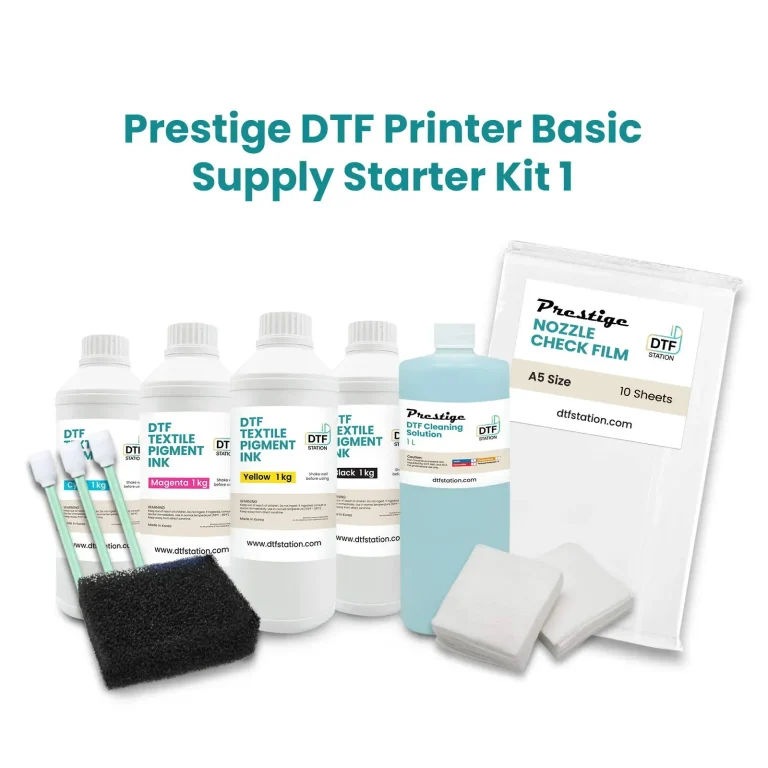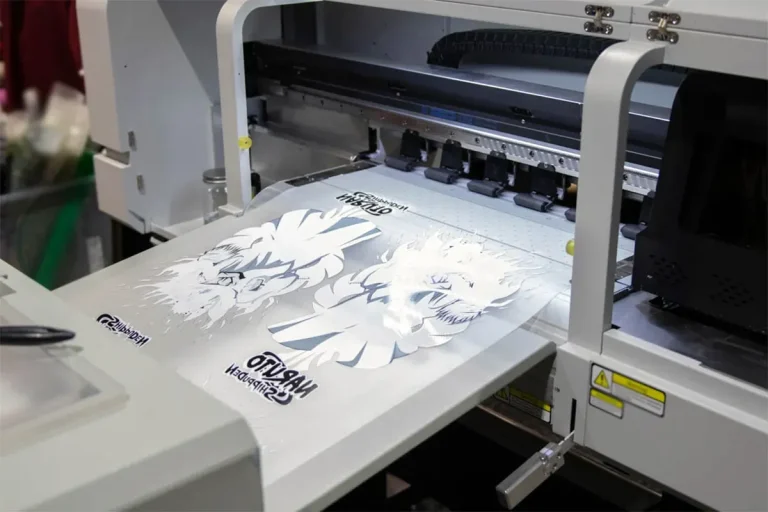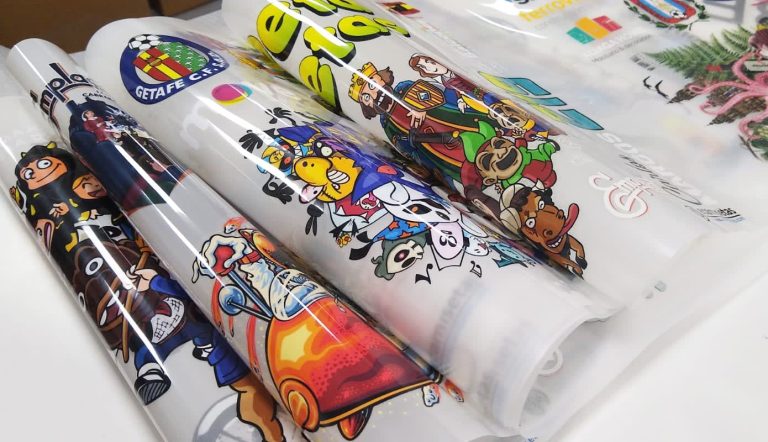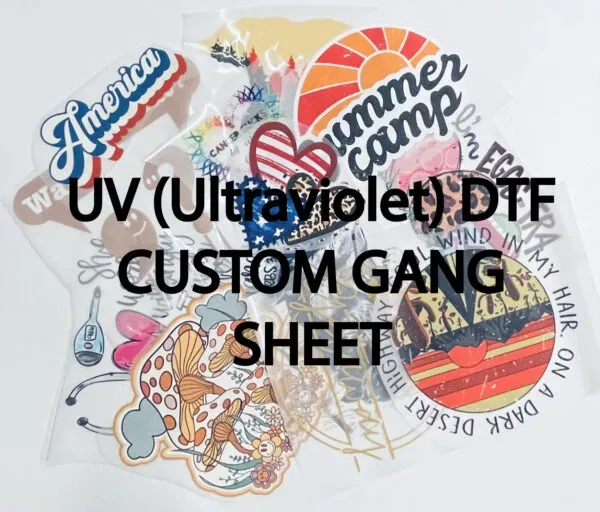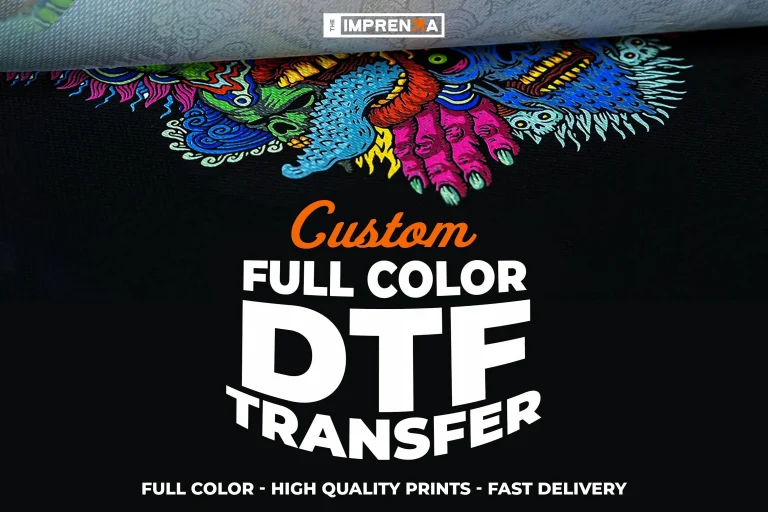
The DTF printing process, or Direct-to-Film printing, is rapidly redefining how custom designs are applied to textiles, setting a new standard in the realm of apparel production. This innovative technique blends vibrant color quality with superior precision, distancing itself from traditional methods like screen printing and sublimation. By utilizing advanced DTF technology, creators can efficiently produce intricate designs on a wide array of fabrics while minimizing environmental impact through sustainable printing methods. With its fast turnaround and adaptability for print-on-demand services, the DTF printing process stands out in today’s competitive market. Whether you’re a small business or an individual artist, the advantages offered by DTF printing make it an exciting option for modern textile applications.
In the landscape of contemporary fabric printing, the Direct-to-Film (DTF) technique is capturing attention for its impressive capabilities. Often compared to other methods such as sublimation printing, DTF introduces a versatile approach that allows for high-quality prints without the extensive setup and materials required in traditional screen printing processes. This method not only caters to various fabric types but also emphasizes eco-friendliness with the use of water-based inks, appealing to businesses focused on sustainable practices. The DTF printing technology is particularly advantageous for custom, print-on-demand projects, where flexibility and quick delivery are essential. As innovations in this field continue to evolve, the DTF approach is becoming increasingly vital in addressing the needs of both creators and environmentally conscious consumers.
Understanding the DTF Printing Process
The DTF printing process is a systematic approach that combines creativity with technology to achieve stunning results. At its core, the process involves several critical stages that begin with design creation using sophisticated graphic software. This initial phase is crucial as it sets the foundation for the subsequent steps. The choice of colors, patterns, and overall design intricacies must cater to the intended fabric type and customer preferences. Additionally, employing the right specifications is essential to ensure that the final output reflects the envisioned quality.
Following the design stage, the prepared artwork is printed onto a specialized transfer film using advanced inkjet printers. This method utilizes water-based inks, allowing for a more environmentally friendly approach compared to traditional methods. After printing, an adhesive powder is applied, which plays a pivotal role in ensuring that the design adheres firmly to the fabric when subjected to heat. The curing process further enhances the durability of the print, setting the stage for the final heat transfer. Undoubtedly, the DTF printing process showcases an ideal blend of innovation and efficiency.
Advantages of DTF Technology
DTF technology has emerged as a formidable alternative to traditional printing methods, thanks to its multitude of benefits. One of the most notable advantages is its versatility; DTF printing can easily accommodate a wide range of fabric types including cotton, polyester, and various blends. This flexibility allows businesses to cater to diverse customer needs and preferences effectively. Moreover, DTF’s vibrant color output ensures that designs stand out, delivering stunning results with every print.
Another significant benefit of DTF printing is its environmental impact, which is particularly appealing in today’s sustainability-focused market. The use of water-based inks minimizes harmful waste and provides a greener option compared to traditional printing. Furthermore, DTF technology dramatically reduces setup times and associated costs, making it an ideal solution for small businesses looking to manage their expenses. This combination of cost-effectiveness and eco-friendliness makes DTF printing a preferred choice for innovative creators.
DTF vs Sublimation: A Comparative Analysis
When evaluating printing methodologies, DTF and sublimation carry unique advantages that cater to different market demands. Sublimation works optimally on specific polyester substrates, focusing its efficiency on vibrant, photo-realistic images. However, DTF printing extends its capabilities across a broader array of fabrics, including cotton and blends, which positions it favorably for versatile applications. This characteristic allows DTF to appeal to hobbyists and large-scale operations seeking durability without the constraints of complex setups associated with sublimation.
Additionally, DTF technology simplifies processes and enhances turnaround times, marking it as a powerful contender in the custom print landscape. This efficiency makes DTF particularly advantageous for those working on print-on-demand models. As businesses explore these differences, understanding when to utilize DTF over sublimation can significantly impact operational success and customer satisfaction, ultimately guiding brands in their technical and marketing strategies.
DTF Printing: Innovations and Case Studies
Recent advancements in DTF printing technology illustrate a thriving industry poised for growth. For instance, companies like EazyDTF have significantly expanded their capabilities to meet rising demands, investing in state-of-the-art large-format printers. This enhancement not only streamlines their service efficiency but also positions them as leaders within the DTF domain, reflecting the method’s increasing popularity and reliability in apparel production.
Furthermore, brands such as DTF San Antonio are successfully combining vibrant printing options with a strong focus on sustainability. By prioritizing eco-friendly methods, they highlight how DTF technology can mitigate waste while delivering exceptional results. Such initiatives serve as a beacon for other printers aiming to cultivate a more responsible production model, underscoring DTF’s potential impact on the apparel industry’s overall sustainability efforts.
The Future of Sustainable Printing Methods
As consumer awareness around environmental issues grows, the demand for sustainable printing methods is becoming increasingly paramount. DTF printing, with its reliance on water-based inks and efficient production processes, is at the forefront of this movement. Brands are not only expected to deliver quality products but also demonstrate a commitment to eco-friendliness. DTF technology inherently supports these goals by producing less waste compared to traditional methods, paving the way for a greener future in the apparel industry.
Moreover, entrepreneurs and small businesses are embracing print-on-demand solutions powered by DTF technology, allowing them to fulfill individual customer desires without overproduction. This model aligns perfectly with the principles of sustainability, encouraging mindful consumption and waste reduction. Looking ahead, the printing industry is likely to witness an even stronger alignment between technological innovation and sustainable practices as the advantages and potential of DTF become fully recognized.
Exploring DTF Print-on-Demand Opportunities
The rise of DTF print-on-demand services has opened new avenues for artists and small businesses to thrive in a competitive market. By leveraging this technology, creators can embark on entrepreneurial ventures that cater to localized or niche markets without hefty upfront investments. The capability to produce high-quality designs on various substrates rapidly allows individuals to respond to trends and custom requests with agility, vastly improving customer satisfaction.
As market dynamics shift towards greater personalization, DTF printing continues to empower creators with the tools they need to capitalize on this demand. By integrating DTF technology into their offerings, businesses can provide unique, tailored solutions that resonate with their target audience. Consequently, the DTF print-on-demand model not only serves to enhance creativity but also fosters stronger connections between artists and consumers, embracing the full spectrum of printing innovation.
Frequently Asked Questions
What is the DTF printing process, and how does it differ from traditional printing methods?
The DTF printing process, or Direct-to-Film printing, involves printing high-quality designs onto a transfer film before applying the design to fabric using heat. Unlike traditional methods like screen printing, which require screens for each color, DTF uses a specialized inkjet printer and water-based inks, making it more efficient, eco-friendly, and capable of producing vibrant designs on a variety of substrates.
What are the key components involved in the DTF printing process?
The key components of the DTF printing process include design creation using graphic software, printing on DTF transfer film with a specialized inkjet printer, applying adhesive powder to the printed design, curing the film to bind the adhesive, and heat transferring the design to the fabric. This multi-step approach ensures high-quality, durable prints.
How does DTF printing compare to sublimation printing?
When comparing DTF printing to sublimation printing, DTF technology offers greater versatility as it can be used on a wider range of materials, including cotton and blends, while sublimation works best on polyester. DTF is ideal for both small runs and customization, providing excellent durability without the need for complicated setups, making it suitable for hobbyists and professionals alike.
What are the environmental benefits of the DTF printing process?
The DTF printing process utilizes water-based inks, significantly reducing waste compared to traditional printing methods that often use hazardous inks. This sustainable printing method not only minimizes environmental impact but also aligns with the growing demand for eco-friendly solutions in apparel production.
Is DTF printing suitable for print-on-demand services?
Yes, DTF printing is highly suitable for print-on-demand services. Its ability to produce high-quality, custom designs quickly and efficiently allows businesses to meet unique customer demands without the need for extensive inventory, making it an ideal solution for small businesses and entrepreneurs looking to offer personalized products.
What innovations are driving the growth of DTF technology in the printing industry?
Innovations such as state-of-the-art large-format printers are enhancing the capabilities of DTF technology, enabling faster production and accommodating higher demand. Companies are also focusing on sustainability and adopting practices that reduce waste, which further propels the acceptance and growth of DTF printing within the apparel sector.
| Key Point | Description |
|---|---|
| What is DTF Printing? | A modern printing technique that prints designs on a transfer film, allowing for vibrant and intricate designs applicable to various fabrics. |
| Components of the DTF Process | 1. Design Creation 2. Printing on Transfer Film 3. Applying Adhesive Powder 4. Curing 5. Heat Transfer to Fabric |
| Benefits of DTF Printing | – Versatile for different materials – Eco-friendly with water-based inks – High color quality – Reduced setup time and costs – Ideal for customization |
| DTF Printing in Practice | Case studies show the expansion and sustainability focus of DTF businesses, highlighting its industry growth and environmental impact. |
| Comparison with Other Methods | DTF offers greater versatility than sublimation, accommodating various materials without complex setups, appealing to a wide range of users. |
Summary
The DTF printing process offers an innovative approach to printing, merging creativity with eco-friendliness and efficiency. By enabling high-quality design transfers onto various fabrics, DTF not only caters to the demands of contemporary apparel producers but also reduces environmental waste through the use of water-based inks. This makes it an excellent choice for anyone looking to launch custom apparel lines or seeking sustainable printing solutions. As the DTF printing process continues to evolve and gain acceptance, it represents a significant step towards a more sustainable future in the printing industry. Through advancements in technology and an emphasis on creativity, DTF printing is set to redefine the boundaries of what is possible in design and fabric printing.

